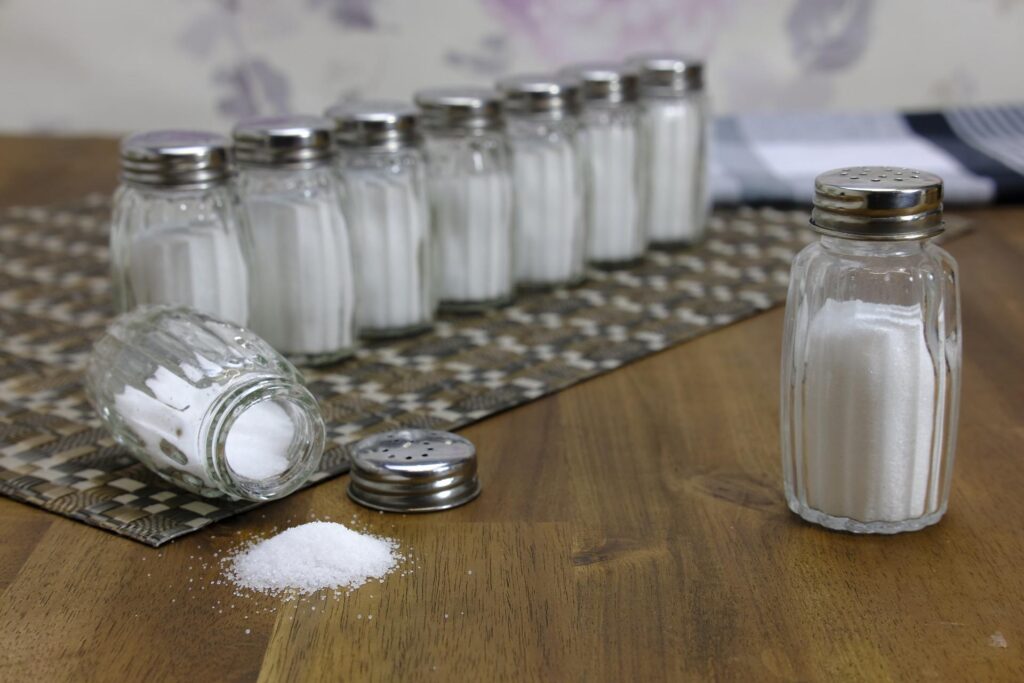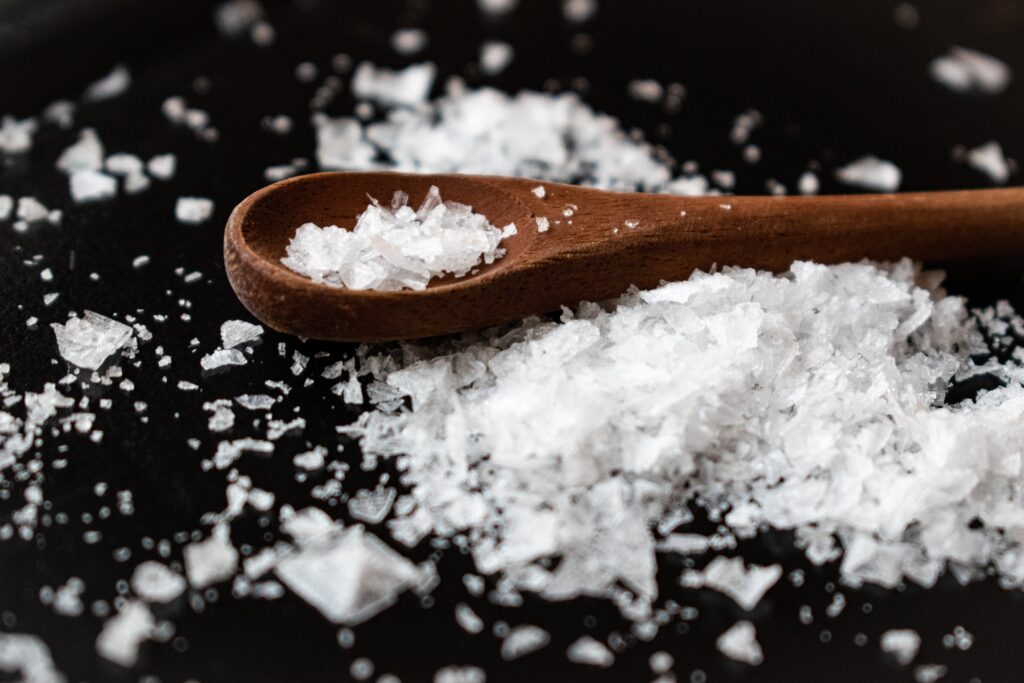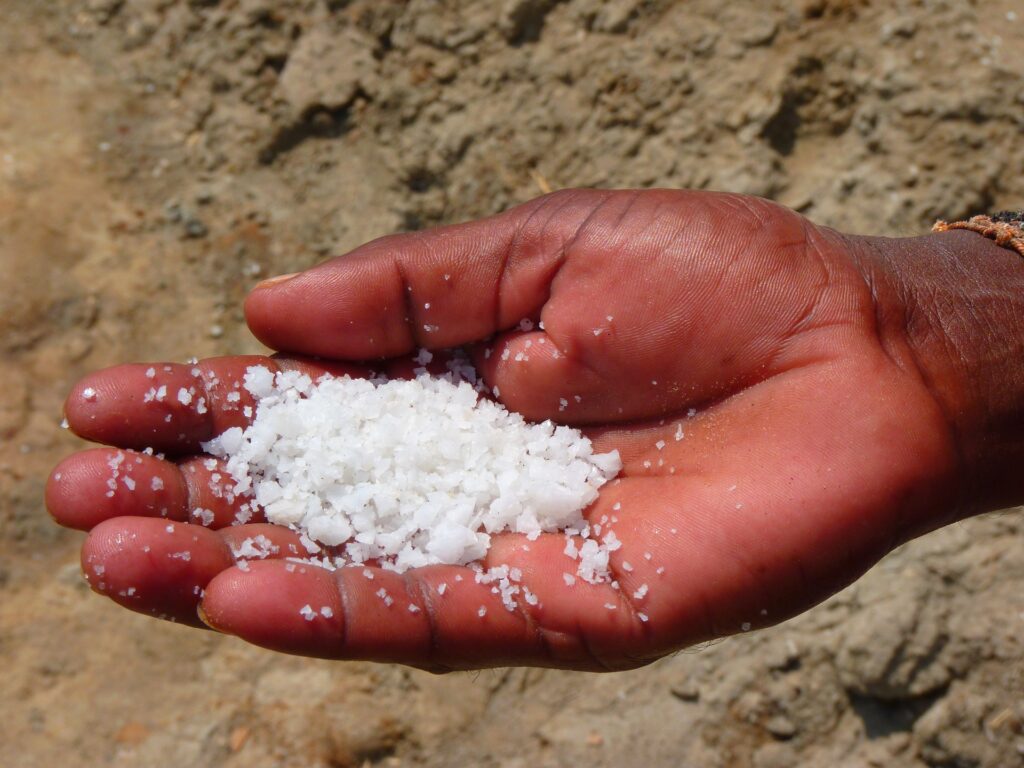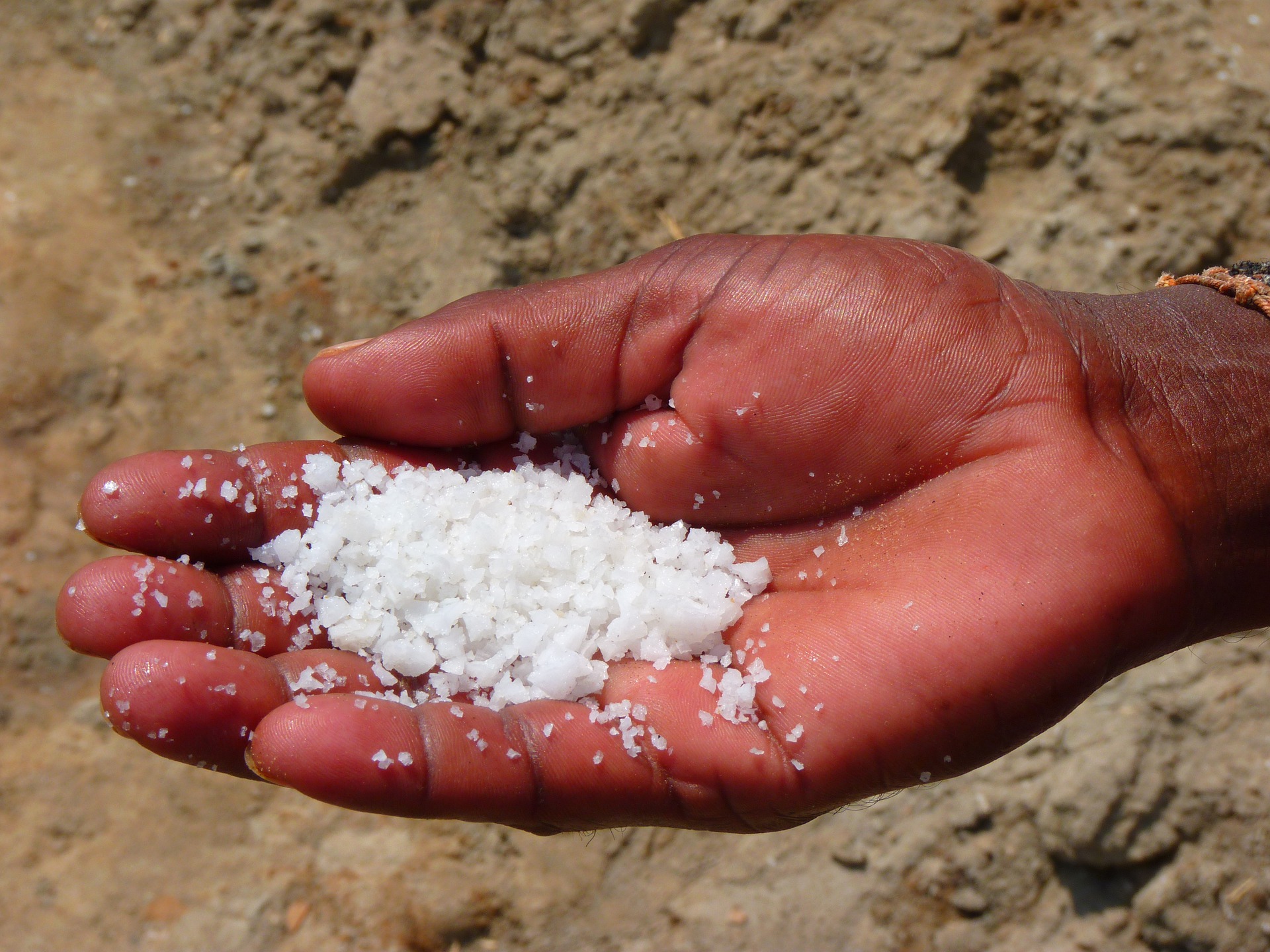Some of the links on this page are affiliate links, which means that Buzzy Kitchen earns commission from purchases made – at absolutely no extra cost to you. Thank you so much for supporting Buzzy Kitchen!
If you store sea salt in an appropriate container, and keep it in an appropriate place, it can, technically, keep forever.
It is a mineral (sodium chloride), and it has an indefinite shelf life. The shelf life does depend on the product, however – including the brand, where it was produced, how it was produced, and various other factors.
So… Can Sea Salt Go Bad?
Before the days of electricity and fridge-freezers, salt was one of the only ways to preserve foods for long periods of time. Salt actually prevents foods from turning bad. It doesn’t rot and biologically break down like other food items.
Going back as far as Ancient Egyptian times, salt has been used as a way of preserving food, particularly meat. Even mummies were preserved with salt during long journeys before they reached their final resting spot.
Also, salt is used to remove moisture. It doesn’t contain any moisture. Bacteria and other organisms don’t have a chance to get a foot in the door (or on the grain), which means that mould very, very rarely grows on salt.
Can Other Types of Salt Turn Bad?
Yes, quite a few varieties and types of salt can turn bad.
Table salt, which is usually fortified with iodine and occasionally other essential minerals and vitamins, contains extra ‘stuff’, including anti-caking agents. Because of this, the salt will have a shelf life, although this is usually around 3 to 7 years after it was manufactured.

Image by Bruno /Germany from Pixabay
As with storing most foods, the length of time that sea salt will last, will depend on how the salt is stored, where it is stored, and a wide range of other factors.
How to Properly Store Sea Salt
To properly store sea salt, you will need a container that is completely airtight, plus a place that is cool, dry, and not in direct sunlight.
If you keep your sea salt in a fully-sealed container, in the cupboard, you will be able to safely use it indefinitely. Try to avoid storing your salt close to or around the kettle, microwave, or oven.
It might look cute to keep sea salt in a little open cellar with a little wooden spoon, but this is not always ideal. Sea salt can absorb moisture and flavours. Over time, the grains can even clump together. Not only that, the spoon can become a breeding ground for bacteria if not properly and regularly cleaned.
Don’t forget: kitchens are usually quite greasy, steamy places. All of that grease and steam can form a residue on food items left out on the counter for ‘display purposes’, including sea salt.

Photo by Maria Petersson / Unsplash
How Long Can Sea Salt Last?
Sea salt can basically last forever, as previously mentioned, but you’ll find that containers or packages of sea salt often come with an expiry date. This seems a little pointless, but some salt products and types contain extra additives. It is the additives that shorten the lifespan.
The purer and more unprocessed the salt, the longer it will last.
The more additives there are, the quicker the sea salt is likely to turn bad.
Sea salt contains fewer additives, such as anti-caking agents, and oftentimes contain none of those additives at all. Because of that, with proper storage, you could theoretically use the same package of sea salt for your entire life without any concerns.

Image by LoggaWiggler from Pixabay
What Happens When Sea Salt Turns Bad?
Salt is very unlikely to grow mould, but you may find that grease, moisture and steam from your kitchen can cause the grains to clump together and turn into hard lumps.
Sea salt can change colour with time, but this is usually not down to it turning bad. Salt that comes directly from the sea will still contain trace amounts of various minerals, absorbed from the sea itself. Because of those minerals (all of which your body needs in a balanced and healthy diet), the colour can change over time, and quite significantly. This changing of colour is not bad, however. It is (usually) completely safe to eat sea salt that has become somewhat discoloured.
